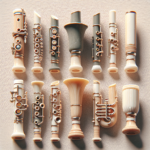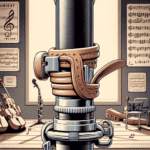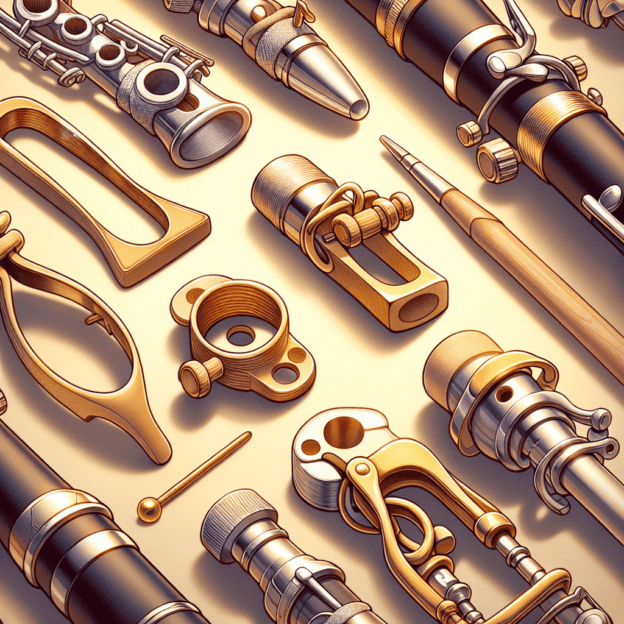Introduction
A ligature plays a crucial role in enhancing your clarinet's performance. For beginners and experienced players alike, understanding different clarinet ligatures can significantly improve your playing experience. This guide compares various ligature materials, designs, and their unique characteristics.
Let's start with the basics. A ligature is a small yet important piece of equipment that secures the reed to the mouthpiece. Its main purpose is to ensure proper reed vibration, producing the rich, resonant sound clarinets are known for. However, not all ligatures are the same!
Metal Ligatures
Many clarinetists prefer metal ligatures for their durability and the brighter, more focused sound they produce. These come in various metals, including gold, silver, and nickel. Each metal affects the tone differently. For instance, gold-plated ligatures often create a warmer tone, while nickel-plated ones produce a more brilliant sound.
A high-quality metal ligature, such as those made by Martin Freres, can provide years of consistent performance. Its snug fit keeps your reed in place, giving you better control over your sound.
| Metal Type | Tone Characteristics | Durability |
|---|---|---|
| Gold-plated | Warm, rich | High |
| Silver-plated | Bright, clear | High |
| Nickel-plated | Brilliant, focused | Very High |
Leather and Fabric Ligatures
On the other side of the spectrum are leather and fabric ligatures. These typically offer a softer, more mellow tone. They're especially popular among clarinetists who play genres requiring a more relaxed sound, such as jazz or classical music. The flexibility of these materials allows the reed to vibrate more freely, which can enhance expressive playing.
Players appreciate leather and fabric ligatures for their comfort. They're gentler on both the mouthpiece and the reed, potentially extending the reed's lifespan. However, they may not last as long as metal ligatures and might need replacing more often.
Combination Ligatures
Combination ligatures offer the best of both worlds. They usually feature a metal body with a fabric or leather overlay, combining the benefits of both materials. You get the durability and firm grip of metal along with the tonal qualities and flexibility of softer materials. Many musicians find that combination ligatures provide a balanced tone suitable for various musical styles.
Martin Freres exemplifies innovation in combination ligatures. Their designs offer reliability and a refined sound that appeals to a wide range of clarinetists.
The Impact of Design
A ligature's design significantly affects your sound. Some have a two-screw adjustment system for precise reed pressure control, while others use a single screw for simplicity.
Screw positioning and overall design influence reed vibration. Side-screw ligatures tend to distribute pressure more evenly, while top-screw designs may allow more reed vibration freedom.
Choosing the Right Ligature
When picking a ligature, consider your playing style, musical genre, and personal preferences. Here are some tips:
- Try Before Buying: If possible, test several ligatures. What works for one player may not suit another.
- Material Matters: Consider the sound you want. Choose metal for brightness and focus, leather or fabric for warmth and softness, or a combination for versatility.
- Design Evaluation: Examine screw placement and design to understand how it might affect reed vibration and your comfort.
Conclusion
Exploring different ligatures can greatly enhance your playing experience. Experiment with various materials and designs to find what suits you best. Remember, your instrument, reed, and playing environment all contribute to your unique sound.
Whether you prefer the classic reliability of metal, the warmth of fabric, or the versatility of combination ligatures, there's an ideal option for you. Brands like Martin Freres offer quality and craftsmanship across their ligature range.







